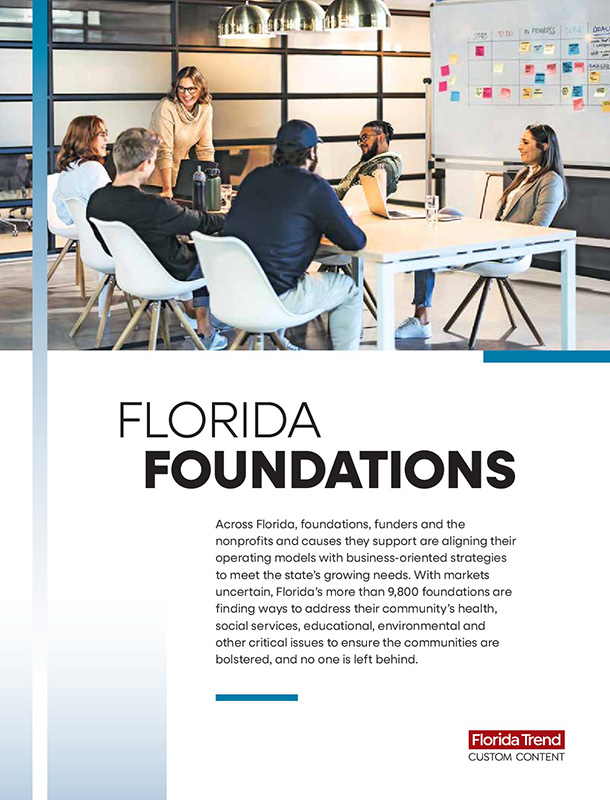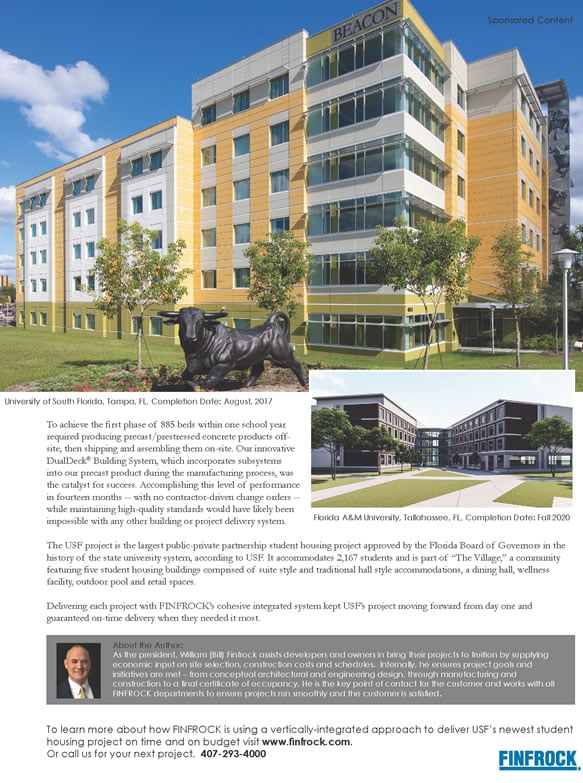Kegel
No. 30 - Midsized | Lake Wales
Founded: 1981 | CEO: Chris Chartrand
Business: Makes bowling lane maintenance machines, parts and chemicals; also operates a bowling training center in Lake Wales and five retail bowling pro shops throughout Florida
Quote: “We try to make bowling better because we all love it so much. If you go around the building, most people will tell you they spend a lot of time bowling,” Chartrand says.
John Davis grew up in a bowling family as the sport’s popularity peaked in the 1950s and 1960s. His dad, who worked at a hat factory, ran a local bowling league in his spare time in St. Joe, Mo. His mom, a volunteer youth bowling coach, regularly took Davis and his four younger brothers to the lanes. An injury during his teen years left Davis unable to extend his bowling arm completely, and of the five boys, he was the only one to never bowl a perfect 300 game.
Davis enlisted in the Air Force in 1967 and spent time at MacDill AFB in Tampa. After serving in Vietnam, he eventually returned to Florida, where he found a job as a mechanic for a bowling alley in Sebring. One of his daily tasks was to clean the lanes — which at the time meant getting on his hands and knees to remove oil and dirt, sometimes using harsh chemicals. “It was some nasty stuff,” he once told the Lakeland Ledger.
In 1981, Davis created a hand-operated lane-cleaning tool called the Key. He quit his job and spent the next year traveling throughout the Midwest in a Chevrolet Malibu station wagon demonstrating the $350 apparatus to bowling alley proprietors.
Typically, the owners would claim their lanes were clean, but then would recoil after Davis ran his machine down a lane and the machine’s contact surface came back black with grime. “People’s jaws would drop,” says his middle brother, Mark, 59. “He usually sold every tool on the spot.”
In 1982, Davis got a big break when Brunswick, a major manufacturer of bowling equipment, ordered 700 units to sell in its catalog. Davis got a patent and named his company Kegel, an adaptation of kegeln, the German word for bowling. He, his wife, Linda, and family friend David Jennings invested their savings to start the company. Mark, his brother, came on board as well.
A year later, after learning that the Sebring bowling alley where he had worked was in financial trouble, Davis bought it. Over time, the alley provided steady income as Davis continued to think up new lane products.
“We’re kind of lazy mechanics,” Mark says. “We want to be able to do the job better, faster and easier.”

In the late-1980s, Kegel came out with a machine called Sanction, which used a laboratory-grade pump to precisely apply oil onto lanes in ways that had never been done before. Oil patterns change the difficulty of a bowling lane by affecting how the ball moves — oil can be applied to make the lane pro-level difficult or nearly gutter-ball-proof.
Kegel later introduced the Walker, a robotic oiling machine that could move from lane to lane on its own at programmed settings. The company initially manufactured the machines for DBA Products, which sold them under its own name until DBA was acquired by Brunswick.
In the late 1990s, Davis decided to build Kegel as its own brand rather than continue as a contract manufacturer. He hired a salesman named Chris Chartrand, a West Palm Beach native who had competed on Florida State University’s bowling team with one of Davis’ sons. Chartrand, then 23, began setting up a global distributor network for Kegel. “I spent a lot of time in Europe and Asia,” he says.
In 2003, Davis looked for outside funding to grow the company and sold a 49.5% stake to private investor Jonathan Mitchell, who lives in Sarasota. A novice bowler, Mitchell says, “If I break 100, it’s champagne all around.” He explains he got involved because he liked and admired Davis and thought Kegel could find “opportunities outside the bowling industry, which I thought would be interesting to capitalize on.”
Bowling Alley Sales
Non-bowling activities, such as eating and drinking, account for a majority of the estimated $3.8 billion in annual sales generated by bowling centers nationwide. Bowling and shoe rentals account for a quarter of total industry sales.

Today, for example, Kegel makes Fizzion, a brand of dissolving tablets used to clean bowling lanes that can also remove pet stains and odors from other surfaces. Fizzion is sold in Publix and PetSmart.
Since 2003, Kegel has operated from more than 100,000 square feet in a Lake Wales business park. With Davis as his mentor, Chartrand became president in 2010 and is now CEO. In 2013, John Davis died of a heart attack at 64. Two years ago, Linda Davis sold her stake in the company to Mitchell, making him sole owner.
Mark Davis, now Kegel’s executive vice president of mechanical product development and support, says John Davis always wanted to be a good employer — stemming from his days working in Sebring for bosses he didn’t like. “For the most part,” says Mark, “we want people to enjoy working for us.”
With about 100 employees, Kegel offers a range of benefits, including on-site biweekly chiropractic care, paid time off for a child’s first day of school and subsidized meals at the company’s deli-style canteen.
Bowling, since the height of its popularity in John Davis’ youth, has struggled to retain participants. Nationwide, the number of people who bowl in a league is less than a fourth of what it was in 1980.
As league play has declined, bowling alleys have added arcades, restaurants and laser tag in attempts to court casual bowlers. Chartrand says Kegel is sticking to core bowling products, however. “We’ve stayed true to what we care about, which is the competitive side of bowling,” he says.
For the moment, the firm is outperforming its industry. Kegel sells about $20 million a year in lane maintenance machines, parts and chemicals. About 40% of its sales are overseas. “Outside the U.S., the two healthiest markets are Japan and Korea,” Chartrand says. “Korea right now is absolutely on fire. Of all the lane machines we ship this year, just under 20% will go to Korea.” Kegel’s sales overall are on track to grow 10% for the year, he says.
Kegel also operates a training center for competitive bowlers in Lake Wales, with 12 adjustable lanes that can be made depressed or crowned to represent some bowling alley flaws. An all-day training session costs $600.
Kegel continues to introduce new products, including a sensor-enabled ball tracking system called Specto that it sells to bowling alleys for $13,500. Each Specto sensor covers six lanes and measures ball motion in 6-inch increments from the foul line to the pin deck; bowlers then get detailed information about each shot via a mobile app, helping them improve their accuracy and consistency.
“While some of our competitors are talking about selling you laser tag in a bowling center, we’re talking about how fast your ball is going with an app,” Chartrand says. “It’s all about bowling.”
On a recent weekday morning, Lucy Sandelin, a Hall of Fame bowler from Tampa, practiced at the Kegel training center next to a young family from Ohio. “We just had groups here from Puerto Rico and Singapore,” Chartrand says.
Chartrand believes the number of league bowlers in the U.S. will stabilize during the next few years because “bowling as a competitive activity is just very unique,” he says. “It’s something people can do at 5 or at 80.”
Bowling in the U.S.
69 million - Number of people who bowl at least once a year
1.49 million - Number of people who bowl in a league
48,964 - Number of bowling leagues
4,466 - Number of bowling alleys
94,985 - Number of bowling lanes
2.5% - Annualized growth rate in sales for U.S. bowling centers between 2012 and 2017. Sales are expected to be roughly flat during the next five years.
Sources: U.S. Bowling Congress












